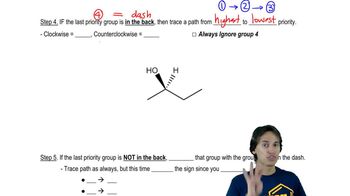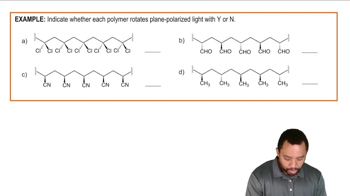Draw a perspective formula for each of the following:
a. (S)-2-chlorobutane
b. (R)-1,2-dibromobutane
 Verified step by step guidance
Verified step by step guidance Verified video answer for a similar problem:
Verified video answer for a similar problem:



 1:48m
1:48mMaster Why stereoisomers need their own naming system. with a bite sized video explanation from Johnny
Start learning